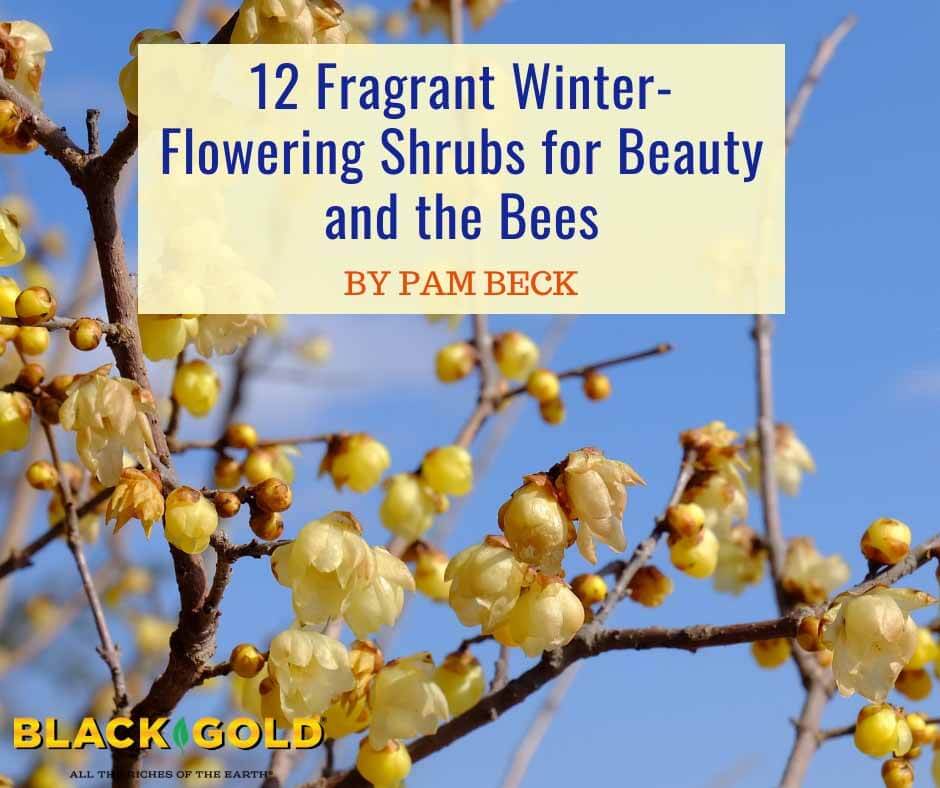
Because of our unseasonably mild winters in the Southeast, the bees and I are swooning over an astonishing number of fragrant, winter-flowering shrubs in the garden. Why would Mother Nature spend so much effort creating intense fragrance in mid-winter flowers? Because their floral fragrance and color are designed to lure early bees quickly and efficiently during chance warm snaps.
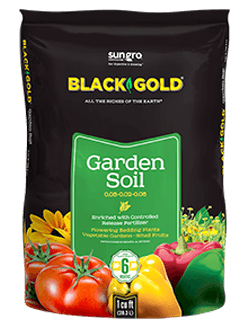 Native bees and honeybees respond quickly to warm air temperatures that coax them from their wintertime sluggishness. Their numbers are lower during chilly months, so the competition is fierce among winter-flowering plants to attract these few brave little winged souls. Therefore, these shrubs use the most potent enticements available – eye-catching flower color (often in yellow hues) and intense fragrance. Fragrance is the only lure that easily rides air currents around the garden, so the more powerful a plant’s perfume, the better its chance of bee pollination.
Native bees and honeybees respond quickly to warm air temperatures that coax them from their wintertime sluggishness. Their numbers are lower during chilly months, so the competition is fierce among winter-flowering plants to attract these few brave little winged souls. Therefore, these shrubs use the most potent enticements available – eye-catching flower color (often in yellow hues) and intense fragrance. Fragrance is the only lure that easily rides air currents around the garden, so the more powerful a plant’s perfume, the better its chance of bee pollination.
Here is a selection of some of my favorite winter-flowering shrubs, beginning with the evergreens and followed by deciduous, to help you find something fragrant to enjoy in your garden this winter, or next. If you plan to plant one, all appreciate soil amendment at planting time. Black Gold Garden Soil is a great choice for adding needed organic matter and a fertilizer boost to encourage good growth and establishment.
Your nose, and the bees, will thank you.
Evergreen Winter Flowering Shrubs
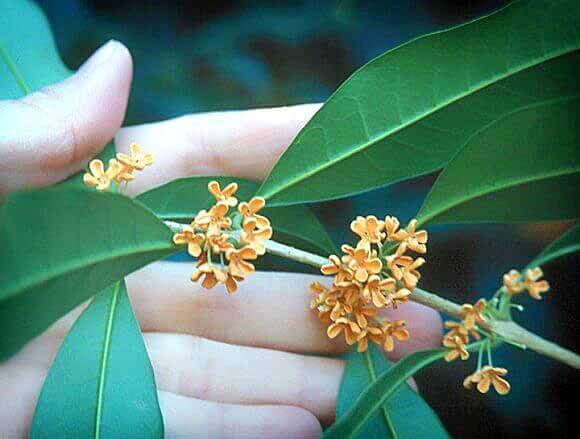
False hollies or fragrant tea olives (Osmanthus spp.) are intensely scented evergreen shrubs. The sugary, fruity smell of their flowers cause garden visitors to stop in their tracks and inhale deeply. Distinguishable by their opposite leaves (remember “O” for Osmanthus and opposite, whereas true hollies have alternating leaves), these hardy plants are very tolerant of difficult sites and almost trouble-free once established.
If left unpruned, Osmanthus fragrans with its tiny white flowers and O. fragrans var. aurantiacus with similar light orange blooms, can become small trees that will survive winters up to USDA Hardiness Zone 7.
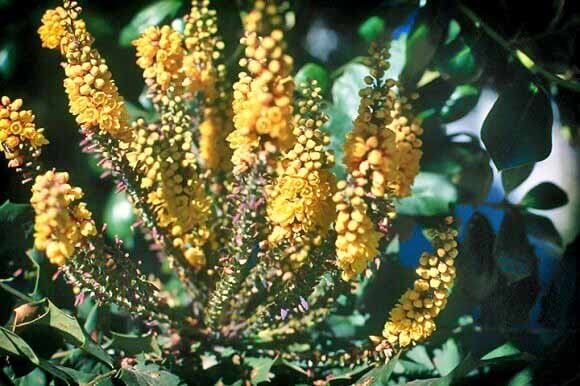
Grape hollies (Mahonia spp.) are architecturally stunning evergreens with holly-like foliage. They produce highly fragrant, golden-yellow spikes of flowers in winter, which later transform into hanging clusters of frosty berries of dark blue (Click here to read more about mahonia). Ranging from low-growing ground covers to 10-foot statuesque shrubs, Mahonia are tolerant of shade and make great specimen plantings. Perhaps the best flowers for fragrance are those of leatherleaf mahonia (Mahonia bealei), which begins blooming in early winter.
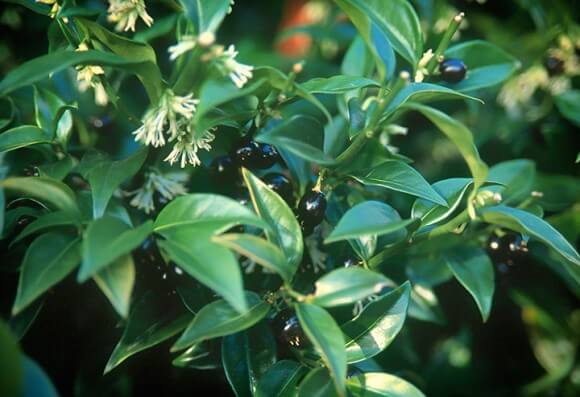
Sweet box (Sarcococca spp.) are wonderfully fragrant low-growing evergreens that tend to spread. The dry-shade-loving plants may be forgotten until they flower in early winter with intensely sweet perfume wafting from the tiniest white flowers. One of my favorites for our southeastern gardens is Sarcococca confusa, a 3 to 5 foot shrub that often holds the previous year’s glossy blackberries alongside new blooms.
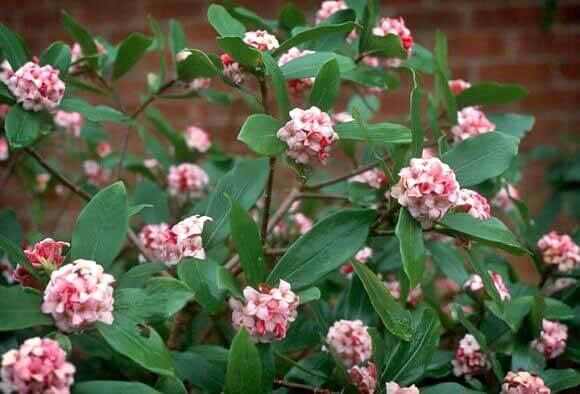
Fickle daphne (Daphne spp.) are garden heart breakers that we continue planting for their unforgettable winter fragrance. Here’s why they are fickle: they need perfect soil, hate to be transplanted, can’t be bumped, and will turn up their toes if watered incorrectly, but many plant lovers have to have them. Their strong fruity scent escapes from pinkish or white blooms in late January to February. Most garden centers offer winter daphne (Daphne odora, USDA Hardiness Zone 7-9) and Burkwood’s daphne (Daphne x burkwoodii, USDA Hardiness Zones 4-9), which both grow to 3 to 4 feet high and wide.
Deciduous Winter Flowering Shrubs
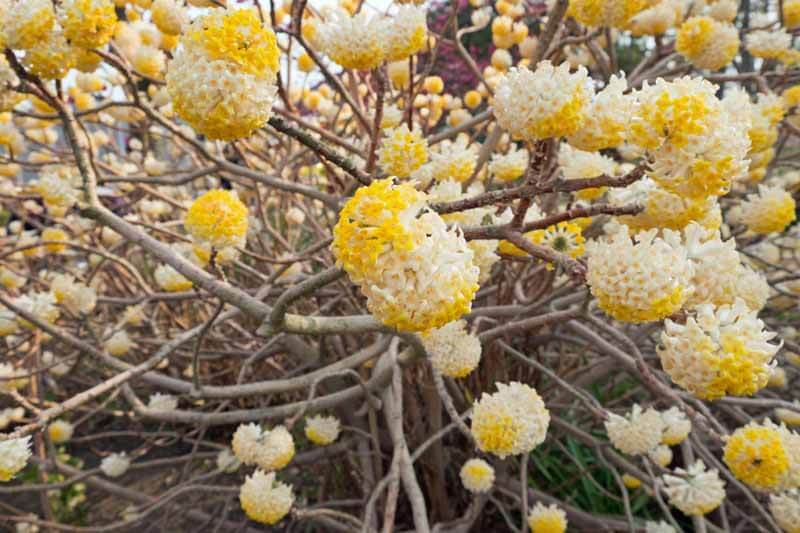
Paperbush (Edgeworthia chrysantha), is one of the most unusual looking shrubs in the winter garden with its naked branches tipped by round clusters of primose-yellow flowers dipped in the shiniest silvery silk. Then on warm winter days, the buds elongate into half-inch long, deep golden trumpets that pour out a rich fragrance that reminds me of sugary icing. Mine has topped out at 4-feet, but paperbush can grow as tall as 6 to 8 feet tall in USDA Hardiness Zones 7-9.
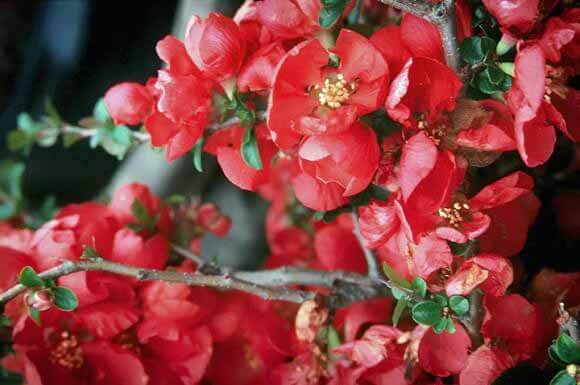
Flowering quince (Chaenomeles speciosa) starts to bloom in late winter to early spring, and flower colors range in various shades of white, pink, red, and orange, not to mention the multi-colored blooms of the variety ‘Toyo-Nishiki’. The fragrance is light and fruity, but quince reliably flowers through the coldest months. The mature size will depend on the type, and there are some exciting new hybrids available at your local garden center.
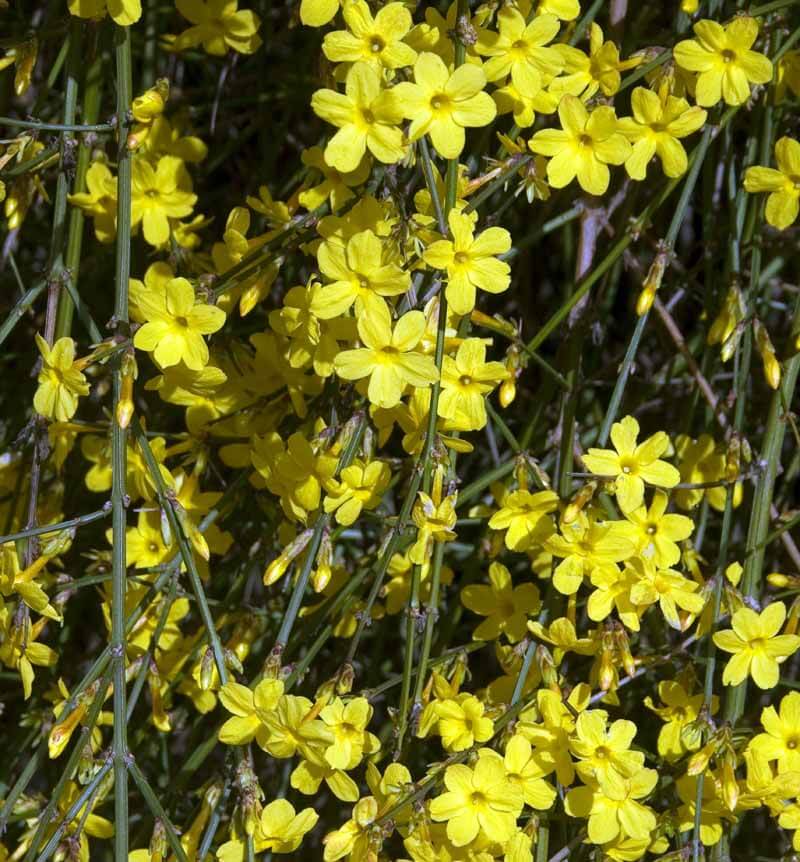
Winter flowering jasmine (Jasminum nudiflorum) is an arching 2- to 4-foot-tall shrub that can eat a lot of garden real estate unless periodically sheared. This shrub will fool your neighbors into thinking that you have the earliest forsythia on the block, as it also sports yellow bells, but on long green whips of branches. One of the easiest plants to grow, winter jasmine is a great solution for a difficult bank or slope.
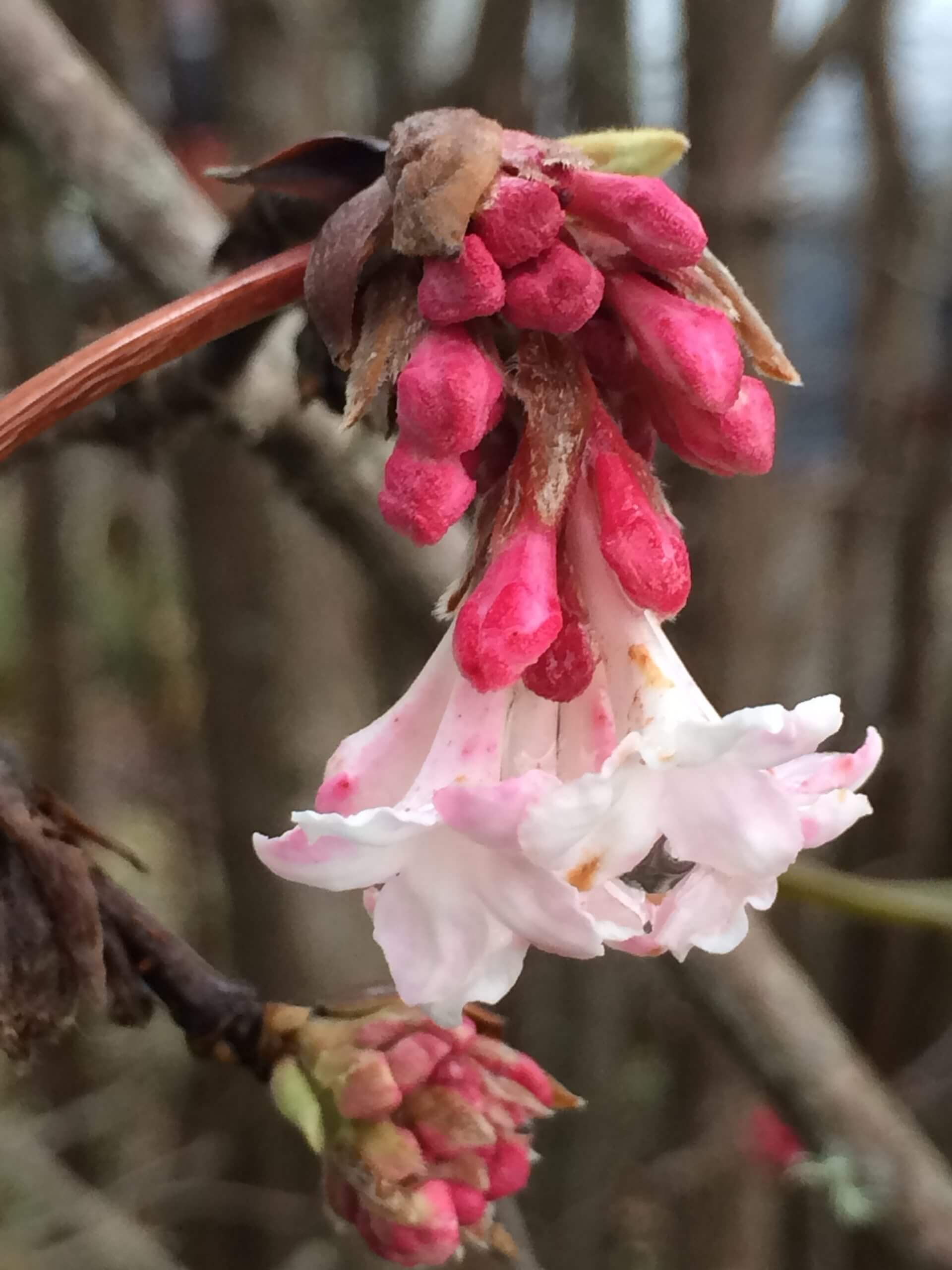
Viburnums (Viburnum spp.) range from evergreen to deciduous, short to tall, and some shrubs in this large group bloom in the dead of winter. Viburnum tinus is a rounded, medium-sized evergreen seen with abundant buds breaking into slightly fragrant flower from January to February, but for intense fragrance look for the upright, deciduous Viburnum x bodnantense ‘Dawn’ with its sweet-smelling pink flowers.
Wintersweet (Chimonanthus praecox) was in full flower in my garden this past Christmas and will continue throughout the winter. A large shrub reaching 10 to 15 feet, wintersweet has the most richly-colored golden, waxy, cupped flowers with purple centers that stream perfume that envelops the entire garden. It grows well in drier sites with full sun to partial shade. Once you have experienced its magic, you will have to own one.
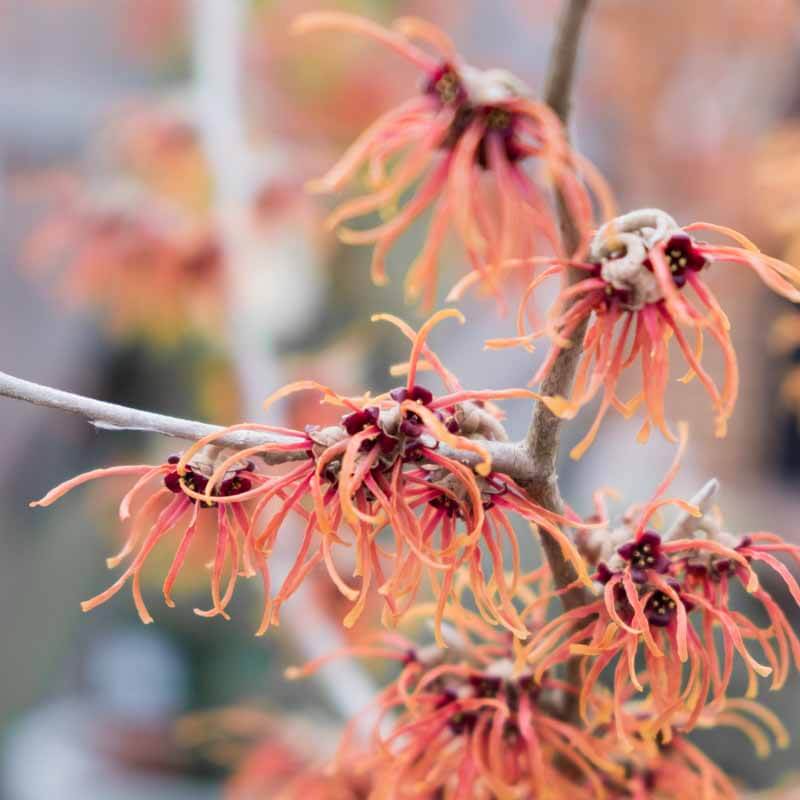
Witch hazels (Hamamelis spp.) are often described as small trees but are so slow to get growing that you may decide to keep them as shrubs, especially if you delight in cutting branches for indoor enjoyment. The winter flowers have fine, whispy petals and are arranged in clusters along the branches. They look like long-legged sea creatures on a coral reef and range in color from bright yellow to orange or rusty-red. Some witch hazels are more fragrant than others. Hamamelis x intermedia ‘Pallida’ is an extra fragrant, yellow-flowered one to grab, if you can find it.
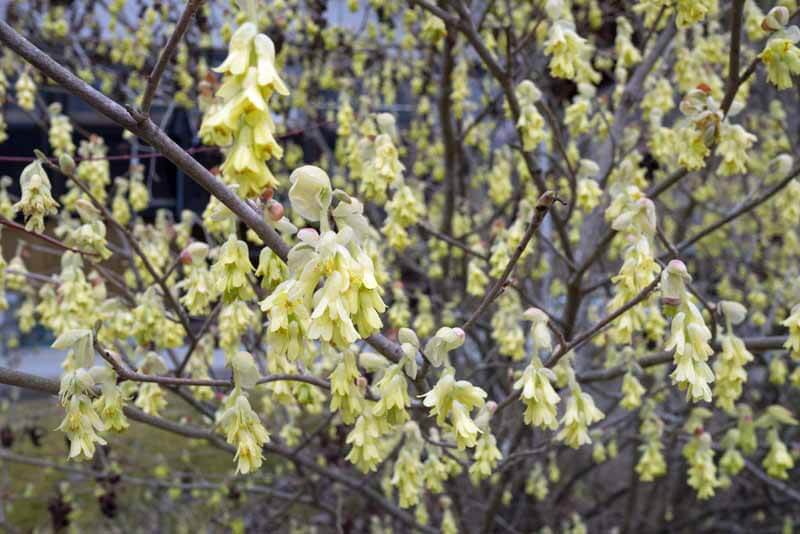
Winterhazels (Corylopsis spp.) are often underappreciated until they produce their yellow, pendulous flowers in late winter. A very desirable 4 to 6-foot shrub is the buttercup winterhazel (Corylopsis pauciflora) with its mildly scented, pale lemon-yellow flowers that droop from thin, leafless stems. Fragrant winter hazel (Corylopsis glabrescens) is a larger shrub (8 to 15 feet) that produces larger pendulous flower clusters.
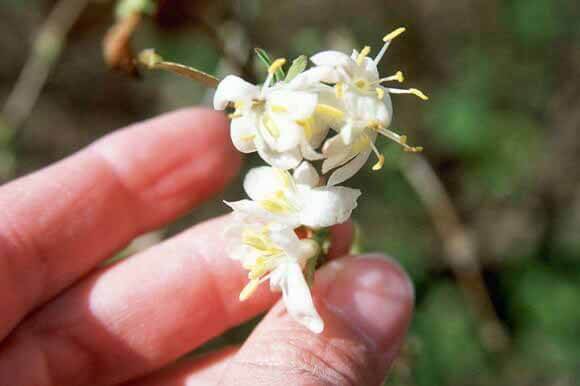
Winter honeysuckle (Lonicera fragrantissima) has tiny white winter flowers with an amazing bouquet. The huge, rangy shrub is an old-fashioned favorite that should be planted where its fragrance may be appreciated. We have ours planted at our parking pad so that we are greeted by its sweet scent all winter long.
If you’d like to learn more about fragrant winter flowering shrubs, find a copy of The Winter Garden, Planning and Planting for the Southeast by Peter Loewer and Dr. Larry Mellichamp, originally published in 1997 by Stackpole Books, and still in print. It has been an invaluable resource to me.

